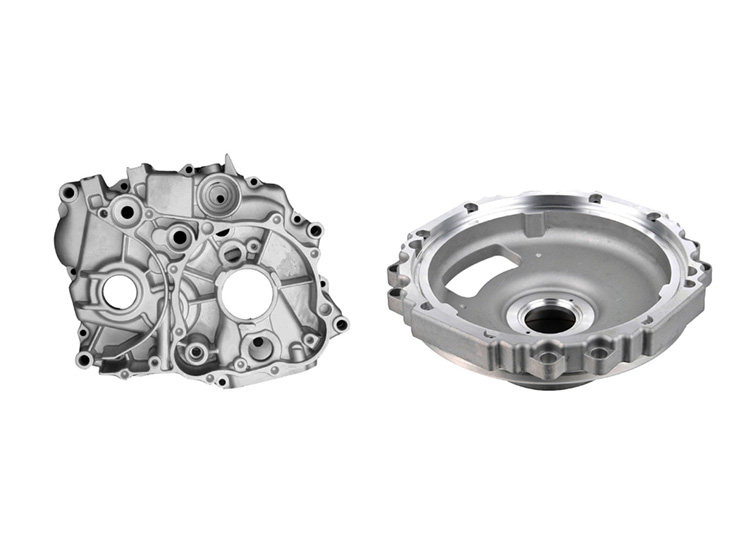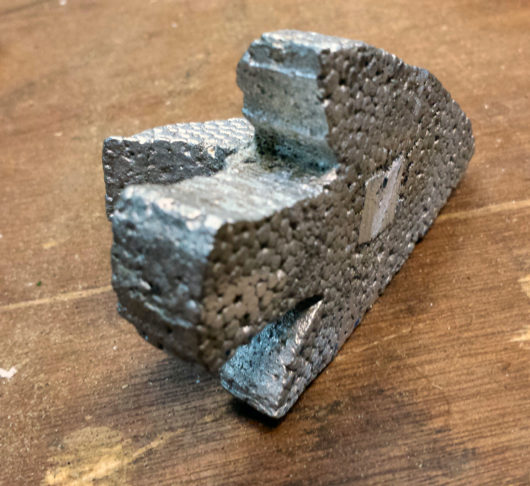An Unbiased View of Stahl Specialty Company
Table of ContentsThe Best Guide To Stahl Specialty Company5 Easy Facts About Stahl Specialty Company ShownA Biased View of Stahl Specialty CompanyThe Definitive Guide for Stahl Specialty CompanyWhat Does Stahl Specialty Company Do?Everything about Stahl Specialty Company

If you're making a metal product, you have actually likely taken into consideration making use of light weight aluminum as the base material. Pure light weight aluminum has limited applications, so it is often combined with other components, such as silicon, magnesium, and manganese to form alloys.
Different elements and quantities create a variety of preferable physical and chemical properties. And the Light weight aluminum Organization (AA), based in North America, has developed requirements that manage aluminum alloys' structure, buildings, and classification. There are two kinds of light weight aluminum alloys wrought and cast. Shop employees form these alloy kinds in various methods, which considerably influences their attributes.
8 Easy Facts About Stahl Specialty Company Explained
Cast light weight aluminum alloys are made by melting pure light weight aluminum and combining it with various other steels while in liquid kind. The mix is put into a sand, pass away, or financial investment mold and mildew.

160.0 represents a cast with a minimum of 99.60% light weight aluminum. The 4th digit, which comes after the decimal point, defines if the alloy is a casting (xxx. 0) or an ingot (xxx. 1). Wrought light weight aluminum alloys also start by combining liquified light weight aluminum with other steels. As opposed to cast alloys, nevertheless, they are developed into their last form via procedures such as extrusion, rolling, and bending after the steel has actually solidified right into billets or ingots.
There are lots of small differences between wrought and cast light weight aluminum alloys, such as that actors alloys can have extra considerable quantities of other metals than wrought alloys. The most noteworthy difference between these alloys is the construction process with which they will certainly go to deliver the final product. Apart from some surface area treatments, cast alloys will certainly exit their mold in practically the precise strong form preferred, whereas wrought alloys will undergo a number of adjustments while in their strong state.
If you assume that a wrought alloy may be the very best for your project, have a look at several of our short articles that describe even more about certain functioned alloys, such as Alloy 6061 and Alloy 6063. On the other hand, if you believe a cast alloy would certainly be much better for you, you can find out more regarding some cast alloys in our Alloy 380 and Alloy 383 write-ups (coming quickly).
More About Stahl Specialty Company
When choosing a light weight aluminum factory for your manufacturing requirements, it's important to examine several variables. Among one of the most critical facets to take into consideration is the experience and capability of the shop. Foundry. Picking a factory who has the appropriate expertise of the aluminum spreading procedure, and the portfolio to reveal for it, assists to have a successful outcome for your job
Having the experience and industry knowledge to engineer your castings for ideal manufacturing and high quality results will certainly streamline the task. Making aluminum spreading calls for a complex set of procedures to achieve the best results. When determining on a new light weight aluminum foundry to partner with, ensure they have extensive industry experience and are knowledgeable about all facets of the aluminum spreading procedure: style, production, material evaluation, and item testing.
The factory needs to also have a tested performance history of delivering phenomenal products that fulfill or go beyond consumer assumptions. Quality assurance should likewise be at the top of your listing when selecting a light weight aluminum factory. By collaborating with a certified factory who adheres to the requirements for high quality control, you can safeguard the honesty of your item and ensure it meets your specifications.
By choosing a firm who supplies solutions that meet or exceed your item needs, you can be sure that your task will certainly be finished with the utmost precision and performance. Different components require various production techniques to cast light weight aluminum, such as sand spreading or pass away spreading.
Stahl Specialty Company Things To Know Before You Buy
Die spreading is the name offered to the procedure of developing intricate metal components with use of molds of the part, likewise recognized as passes away. The procedure utilizes non-ferrous metals which do not have iron, such as light weight aluminum, zinc and magnesium, as a result of the desirable homes of the steels such as reduced weight, higher conductivity, non-magnetic conductivity and resistance to rust.
Die spreading manufacturing is quick, making high production levels of elements very easy. It creates even more parts than any type of other procedure, with a high degree of accuracy and repeatability. To find out more about die casting and die spreading products made use of at the same time, checked out on. There are 3 sub-processes that drop under the category of die spreading: gravity pass away casting (or permanent mold casting), low-pressure die casting and high-pressure die spreading.
Despite the sub-process, the die spreading process can be damaged down into 6 steps. After the purity of the alloy is evaluated, passes away are produced. To prepare the craves casting, it is very important that the dies are clean, to ensure that no residue from previous productions stay. After cleansing, the ejection lubrication is used to the die to make sure a smooth launch.
Stahl Specialty Company for Dummies
The pure steel, likewise called ingot, is included in the heater and maintained at the molten temperature level of the metal, which is after that moved to the shot chamber and injected into the die. The stress is after that kept as the metal solidifies. Once the metal solidifies, the cooling procedure begins.
(https://www.abnewswire.com/companyname/stahlspecialty.com_153717.html#detail-tab)
The thicker the wall surface of the component, the longer the cooling time due to the fact that of the amount of indoor steel that likewise needs to cool down. After the element is completely cooled down, the die cuts in half open and an ejection system presses the component out. Adhering view website to the ejection, the die is shut for the next shot cycle.
The flash is the added material that is cast during the process. This must be trimmed off utilizing a trim tool to leave just the main part. Deburring eliminates the smaller pieces, called burrs, after the cutting procedure. Ultimately, the part is brightened, or burnished, to offer it a smooth surface.
The Single Strategy To Use For Stahl Specialty Company

Zinc is one of the most previously owned alloys for die spreading due to its lower price of raw materials. Its rust resistance likewise allows the components to be lengthy enduring, and it is one of the much more castable alloys due to its lower melting factor.
As stated, this alloy is just one of one of the most frequently used, yet produces will, sometimes, select aluminum over zinc as a result of light weight aluminum's manufacturing advantages. Light weight aluminum is extremely economical and among the more versatile alloys. Aluminum is used for a number of different items and sectors anything from home window frames to aerospace products.